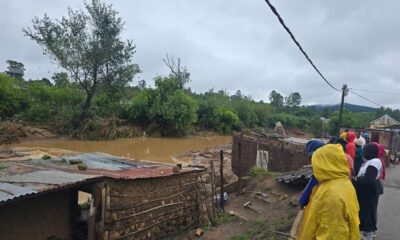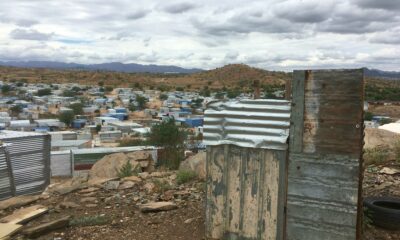Business
The R1 Deal That Sold Out Durban: Why Sapref’s Sale Feels Like Betrayal

A refinery sold for the price of bread
When the Sapref oil refinery in south Durban changed hands for just R1, it was not just a business deal. It was the kind of transaction that tells you who carries the costs of South Africa’s economy and who gets to walk away free. Shell and BP, the previous owners, handed over the site to the state-owned Central Energy Fund (CEF) without any liability for decades of environmental and health damage.
The sale comes with bitter history. Built in 1963 on land zoned under apartheid for Black and brown families, Sapref rose as South Africa’s largest refinery, surrounded by the neighbourhoods of Wentworth, Umlazi, Chatsworth, Merebank, Clairwood, Bluff, and Isipingo. These communities were never consulted about the deal.
Life in “cancer alley”
For decades, families here have breathed in toxins while watching their children fall sick. Asthma became a norm, leukaemia rates soared far above the national average, and the district became known as “cancer alley.” When the neighbouring Engen refinery exploded in 2020, injuring residents and destroying homes, the trauma only reinforced what locals had long known: their lives were secondary to profit.
Now, instead of closure, the CEF wants to increase Sapref’s capacity to 600,000 barrels a day, triple what it once processed. Residents who had just begun to feel cleaner air since operations paused are bracing for even worse.
Climate disasters already knocking
South Africa ranks among the top 15 fossil fuel emitters globally. Its reliance on coal and oil has worsened the climate crisis, with the poor bearing the heaviest toll. The KZN floods of 2022 killed 544 people and displaced tens of thousands. In June this year, Mthatha was submerged again, with more than 100 lives lost. These are not isolated “natural” disasters, but the new reality of extreme rainfall made more intense by global warming.
Ironically, it was the 2022 floods that forced Sapref to shut down. Petrochemicals spilled into land and rivers, adding insult to injury. Reviving and expanding the refinery means rebuilding with public money while leaving frontline communities to deal with worsening climate shocks.
Workers caught in the middle
Politicians argue that Sapref brings jobs. In reality, of the 2,000 workers employed during operations, only 800 had permanent positions. The rest were outsourced to contractors, often without benefits or medical aid. Residents closest to the refinery rarely got jobs anyway, often failing medical tests due to the very conditions created by the plant.
People like Allan Holmes, who grew up across from Engen’s gates, live with generational trauma. His mother died of cancer, he developed asthma, and explosions have shaped his family’s life. “We get asthma and cancer for free,” he has said, describing years of legal battles and no accountability.
Profit over people
The CEF’s own legal reviews warned of criminal risks tied to Sapref’s emissions. Yet government has pushed ahead. Shell and BP, meanwhile, walked away unscathed, leaving behind a refinery on toxic ground and a public fund to pick up the bill.
This is more than a R1 sale. It is a reminder that apartheid-era land zoning, weak infrastructure, and systemic corruption still shape who pays for South Africa’s growth. Durban’s most vulnerable residents continue to shoulder costs that never make it onto the balance sheets of multinational corporations.
Communities wanted closure, repair, and justice. What they got instead was betrayal dressed up as economic revival.
Also read: Steel Tariff Shake-Up: Why South Africa’s Industry is Anxious About Itac’s Proposal
Follow Joburg ETC on Facebook, Twitter, TikT
For more News in Johannesburg, visit joburgetc.com
Source: Daily Maverick
Featured Image: Engineering News


























